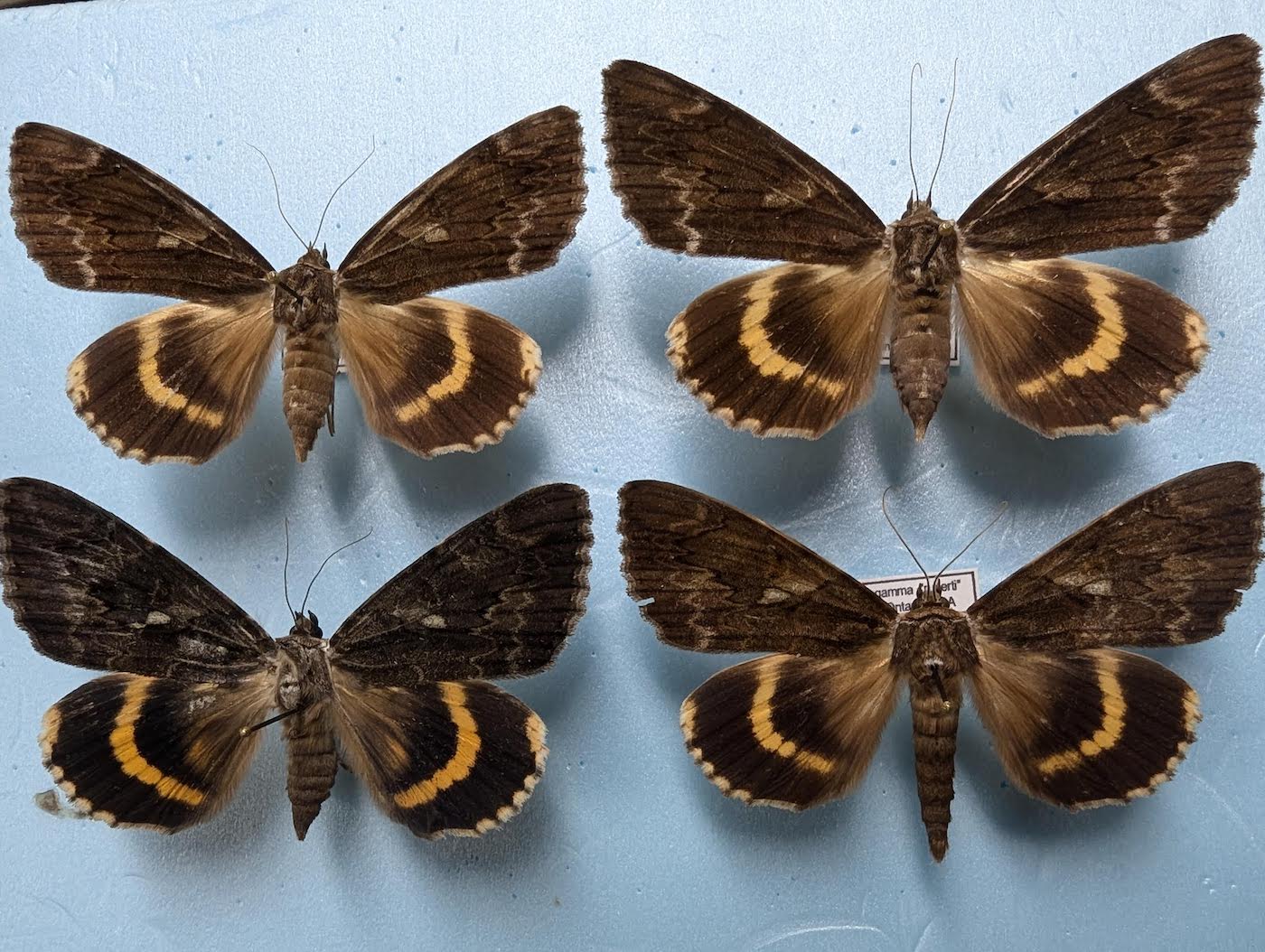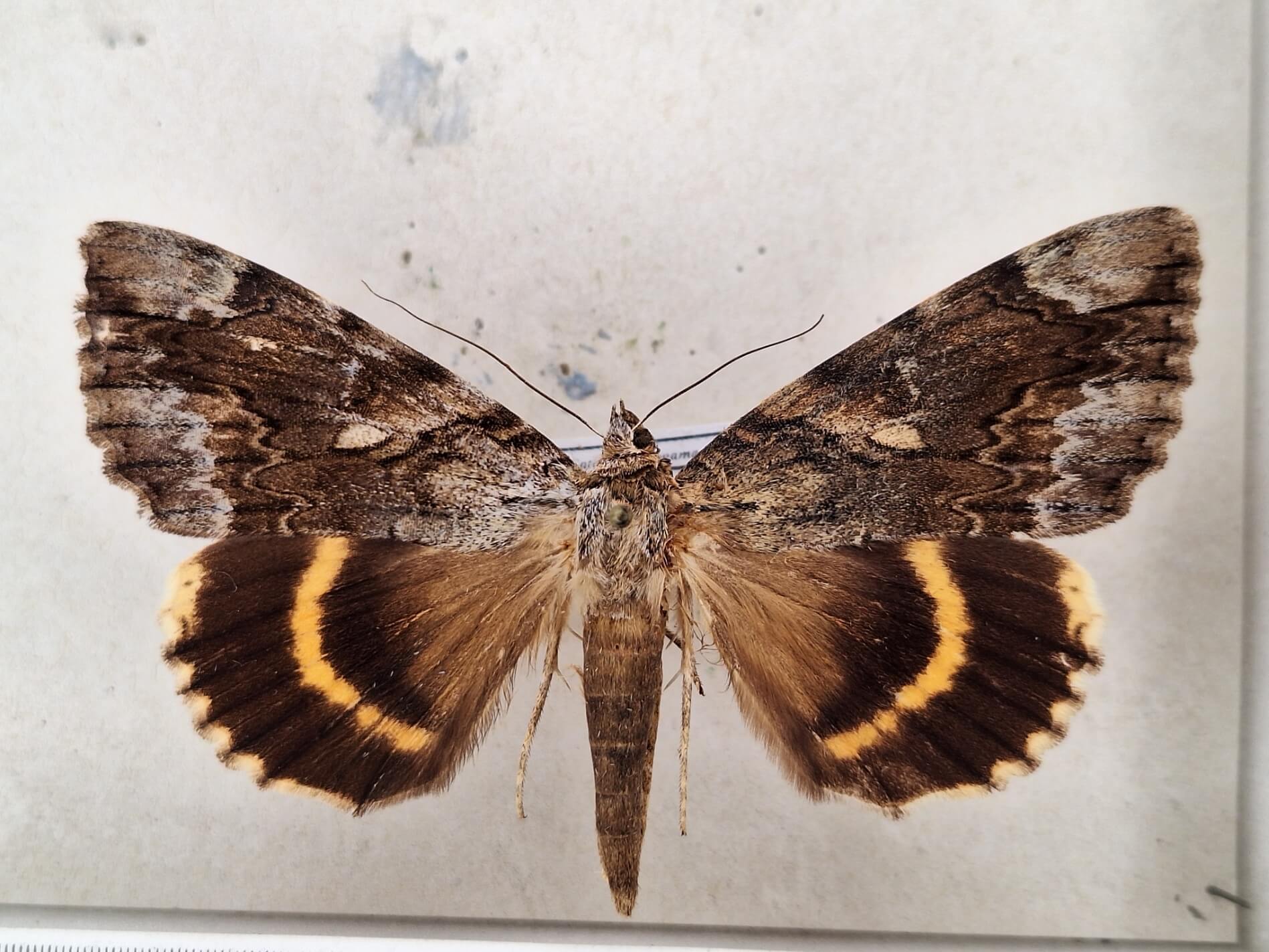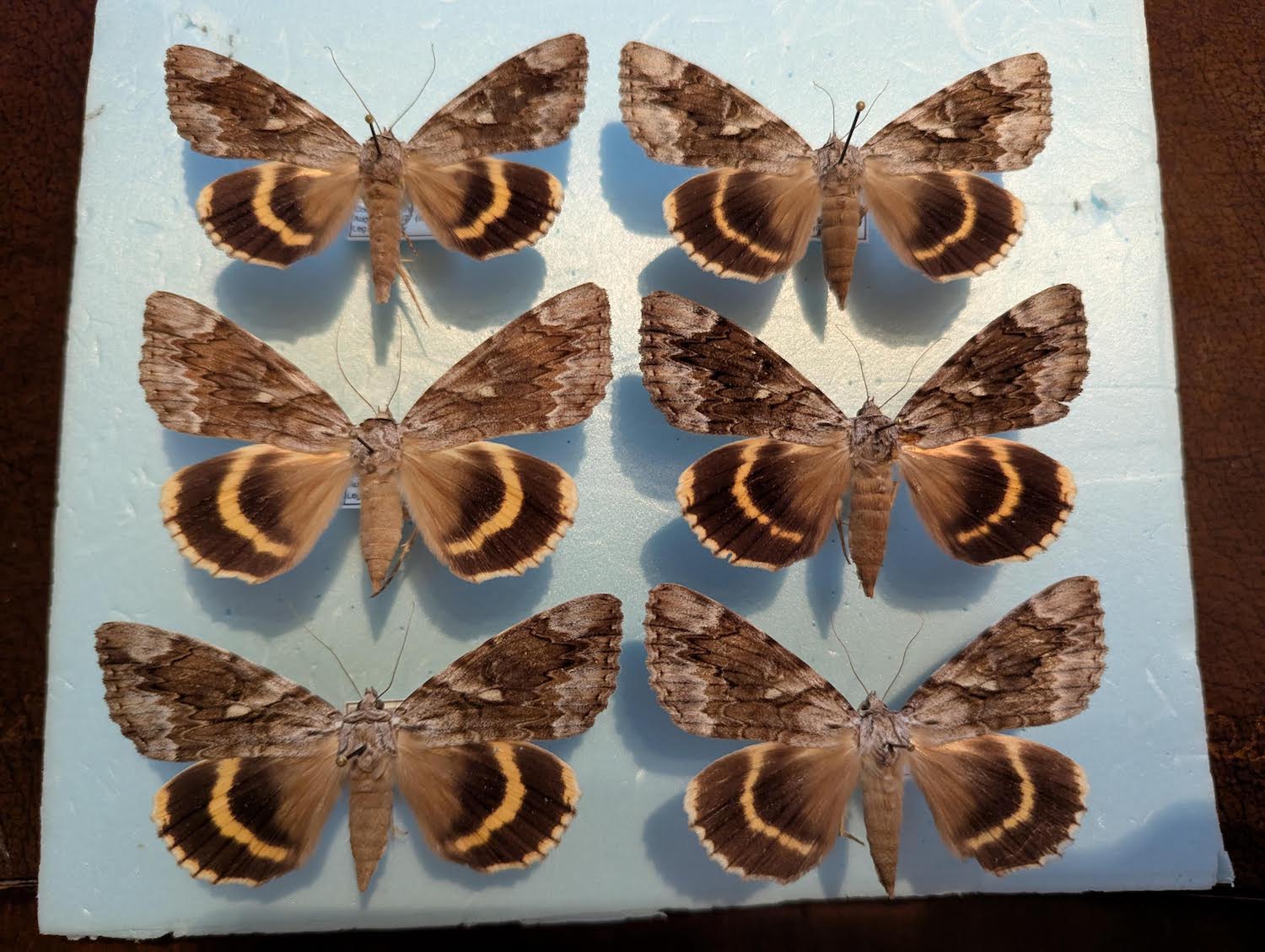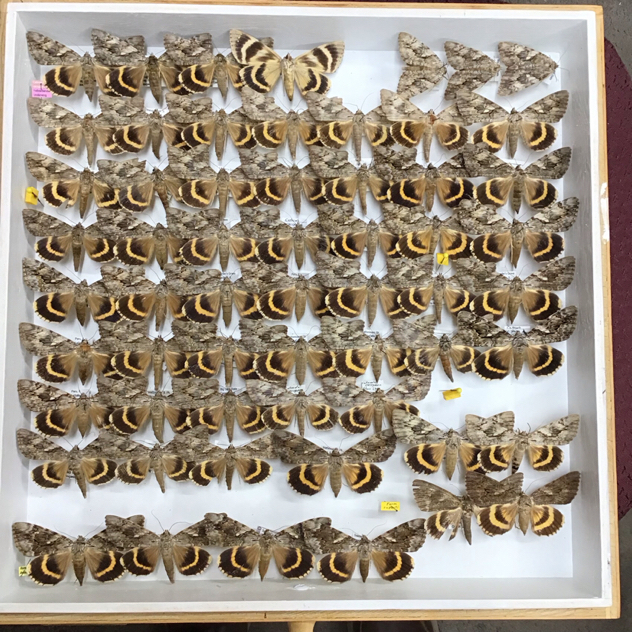Page 1 of 1
Catocala cerogama form "ruperti"
Posted: Fri Nov 22, 2024 3:17 pm
by mothman55
I live in an area (Southern Ontario) where Catocala cerogama is quite common. Every once in a while I will come across the melanic form called "ruperti". Not sure how uncommon this form is, I don't see them every year, maybe see one every 2 or 3 years in my area of baiting. Just wondering how often others may come across the melanic form.

- 0-1.jpeg (245.97 KiB) Viewed 2374 times
Re: Catocala cerogama form "ruperti"
Posted: Fri Nov 22, 2024 4:21 pm
by bobw
I'm not in the States, but I've been collecting Catocala for years. I've been trying to get a f. ruperti for years, but never come across one, I do have one f. bunkeri though.
Re: Catocala cerogama form "ruperti"
Posted: Sat Nov 23, 2024 3:05 pm
by jhyatt
I've never seen that form in the southern Appalachians.
jh
Re: Catocala cerogama form "ruperti"
Posted: Mon Nov 25, 2024 7:45 pm
by Chuck
Mothman- are ALL of those four melanic, or just the bottom two?
Reason I ask: all of my "cerogama" are overall lighter; the FWs are more grey than brown, there is more "figure" in the FW, and the white FW submarginal line is non-existent. So I question if I have cerogama.
Re: Catocala cerogama form "ruperti"
Posted: Mon Nov 25, 2024 11:00 pm
by mothman55
Yes, all four are melanic. The one at the bottom left is notably darker, more black than brown. It's from this year and the only one I have seen more black than brown on the forewing. Cerogama are pretty easy to identify as the hindwing yellow stripe does not look like any other catocala. There is a form "bunkeri" that has dark streaks on the forewing, but "ruperti" is completely dark forewing. Post a pic of your cerogama if you like and we can verify what it is.
Re: Catocala cerogama form "ruperti"
Posted: Wed Nov 27, 2024 12:00 pm
by bobw
Here is my male of f.
bunkeri. The basal area of the hindwing is darker than typical specimens and the forewing is partly melanic, in a pattern that's quite common among
Catocala, e.g.
innubens f.
scintillans and
miconympha f.
gisela.

- bunkeri.jpg (266.46 KiB) Viewed 2106 times
Re: Catocala cerogama form "ruperti"
Posted: Wed Nov 27, 2024 7:50 pm
by Trehopr1
Wow, now there's a very unusual and seldom seen form indeed !.
I've never seen it in any private collection.
Thank you so much Bob for sharing and you're very fortunate to have such an unusual beastie for your collection.

Re: Catocala cerogama form "ruperti"
Posted: Wed Nov 27, 2024 11:22 pm
by mothman55
An interesting observation of "bunkeri" that I have caught in Ontario, is that many of them have a very thin hindwing stripe. Compared the three on the right (thin stripe) to the three on the left (normal stripe). Also, I have not seen this "thin" stripe on the typical cerogama form in my area.

- 0-1.jpeg (198.8 KiB) Viewed 2056 times
Re: Catocala cerogama form "ruperti"
Posted: Thu Nov 28, 2024 6:20 pm
by bobw
mothman55, I sent you a PM.
Re: Catocala cerogama form "ruperti"
Posted: Sat Jan 04, 2025 5:56 am
by billgarthe
In all my years, I’ve only caught 2 ruperti and 4 bunkeri. Some years C. cerogama are more common than other years. There are a couple of other odd ones as well. Most all did come to my sugared trees as opposed to lights.

- IMG_1893.jpeg (603.47 KiB) Viewed 1004 times
Re: Catocala cerogama form "ruperti"
Posted: Tue Jan 07, 2025 1:09 am
by mothman55
Hey Bill, very nice selection of C. cerogama. The two with much lighter color just above the 2 "ruperti" are from "aurella" according to Sargents "Legion of Night". I have seen very few of those over the years while I have been fortunate to encounter 7 "ruperti" out of the hundreds of cerogama that have come to my bait.
I do especially love all of the different melanic forms of catocala species, and recall you once showed a melanic coccinata, had not seen one of those before. I will have to start a thread on all the melanic forms of catocala that the group had seen/caught, would be interesting to know how many species do have a melanic form.